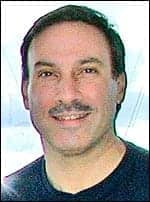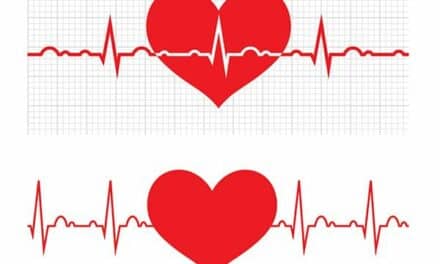 |
| Leo Costello |
Clinical dynamics corp, wallingford, Conn, designs, manufactures, and markets NIBP simulators, SpO2 simulators, and SpO2 probe testers. Among its customers are clinical and biomedical engineering departments, patient monitoring makers, and independent service organizations. 24×7 spoke with Leo Costello, Clinical Dynamics’ principal founder, president, and director of research and development, about the company’s products, its future, and the industry.
24×7: What are the differences between the AccuPulse and the SmartArm?
Costello: Our AccuPulse BenchTop and AccuPulse handheld NIBP simulators have replaced SmartArm. All AccuPulse models have a revolutionary simulation engine that is virtually frictionless. They can generate high-definition, real patient waveforms. Most significantly, they can also generate true motion artifact.
24×7: What makes the AccuPulse revolutionary?
Costello: The AccuPulse handhelds are the first NIBP simulators that are part of a product line where a biomed can purchase a basic model, upgrade it all the way to the high-end model, and use our Web site for most of the upgrades. We have a path you can grow with; if your budget can only fit $995 or $1,395, you can get in the game now and add features, as you need. Our innovative Web-based upgrades benefit biomeds because they save shipping costs, equipment downtime, and the hassle of packing up the unit. A lot of features nowadays are software-enabled. AccuPulse handhelds have a USB port, so you connect them to your PC, then log into Clinical Dynamics’ Web site for the feature upgrade. Upgrades are not necessarily free. You are prompted to do the upgrade on the Web site, and the software is downloaded to your AccuPulse handheld. Another major benefit is the lifetime warranty for the simulation engine that is standard on all AccuPulse handhelds, even the entry-level model. The simulation engine is the electromechanical piston that generates the pressure pulses. AccuPulses generate physical pressure; they’re frictionless. We have run 3 million cycles on a bunch of these, and that has given us enough confidence to have a lifetime warranty on this one component, referred to as a simulation engine. It is the single-most expensive part—the one that does the work—like the gun on a tank, the whole reason the tank exists. We have also made it more bite-size.
24×7: Is it critical to slim down the size of the equipment?
Costello: I think that is definitely a trend that is happening. Even if we slash the price on our classic products, that is not going to be enough. Small size, portability, a small footprint—those are becoming more important. Part of that is because there is more equipment to test, more categories of equipment. Biomeds need to carry more kinds of testers, so they would like each tester to be smaller and lighter. A biomed shop or service company would like, if possible, to have each of the technicians and service engineers handle a wider variety and to be cross-trained.
24×7: What sets Clinical Dynamics apart from other companies that produce simulators?
Costello: The biomed test equipment marketplace has gone through a lot of consolidation in the last 3 to 5 years. There is now a single dominant player—and they seem to grow by acquisition, and so they are not bringing a lot of innovation to the market. This is common in many industries—it is the smaller, leaner companies that innovate. Clinical Dynamics focuses exclusively on simulators and test equipment for patient monitoring, particularly NIBP and SpO2, which require sophisticated instrumentation technology to do correctly. They are both noninvasive, and they have become ubiquitous in health care settings.
In many clinical applications, NIBP has a fundamental accuracy need that is still not being met. Lots of companies are striving for a Holy Grail; there is a lot of innovation going on with blood pressure measurement. Clinical Dynamics specializes in NIBP simulators that can help NIBP manufacturers to meet their design goals. For 14 years, we have worked with many of the established and start-up NIBP manufacturers.
24×7: Is competition from abroad driving changes in the industry?
Costello: Clinical Dynamics exhibited at the Florida International Medical Expo in Miami Beach in August, and we met many fellow exhibitors from China. Generally, I was very impressed with the quality of the equipment—one third to one fourth of what we might expect to pay for something. Eventually, it would seem that this is going to put downward pressure on the prices of patient monitoring equipment. If anything, this change will create a greater demand for biomeds to ensure the consistent high quality of the equipment deployed in any clinical setting.
24×7: Are imported components making inroads?
Costello: A lot of the traditional patient monitoring companies are already beginning to use modules sourced offshore. Ninety-nine percent of Clinical Dynamics’ suppliers are based in the USA, and three of our most important suppliers—for PCB assembly, sheet metal fabrication, and painting—are located right here in New England. They have supplied us with quality parts at fair prices for 14 years.
24×7: What other trends have caught your eye?
Costello: Another trend I see, that I think is about to explode, is home monitoring. It could create a whole category of consumer medical devices that are professionally managed, using some kind of remote monitoring. Entirely new players are jumping into this game. Delphi, which used to be an automotive manufacturer from GM, and Philips, are doing it. No doubt GE is at least exploring it, to catch all the Baby Boomers. Once we start retiring and need a ton of health care, it would dramatically increase the need for service technicians. Even if a device has a 3- to 4-year lifetime, it still has to be checked for accuracy. When a customer calls us looking for test equipment, we do not necessarily know what they are doing with it. I am kind of excited by it. For a person who has elderly parents, instead of having a home aid go out once a week to take somebody’s vital signs, some amount of measuring can be done efficiently by remote monitoring equipment.
24×7: Are digital and wireless technologies affecting the medical devices you are producing?
Costello: They are in the sense that interconnection and remote control of test equipment is going to be more seamless. Soon, Bluetooth interfaces will be available as an option on test equipment. You will not need all of those cables to talk to your computer for logging or controls.
24×7: What kind of support do you provide biomeds?
Costello: We have live telephone support. As a small company, it is one of the areas we have to compete in. We get back to people the same day.
24×7: Through your work and contact with biomeds, what do you see that biomeds need to be aware of to stay viable?
Costello: There is always something new being introduced. You have to absorb, read, interact. There are online biomed discussion groups where you can pick up quite a bit of information, like having an ongoing real-time discussion group with your peers. An online discussion forum in the United States is the Biomedtalk Listserv, www.BMETSonline.org. In the UK there is the Web site www.ebme.co.uk, which provides a similar online discussion forum for biomeds.



